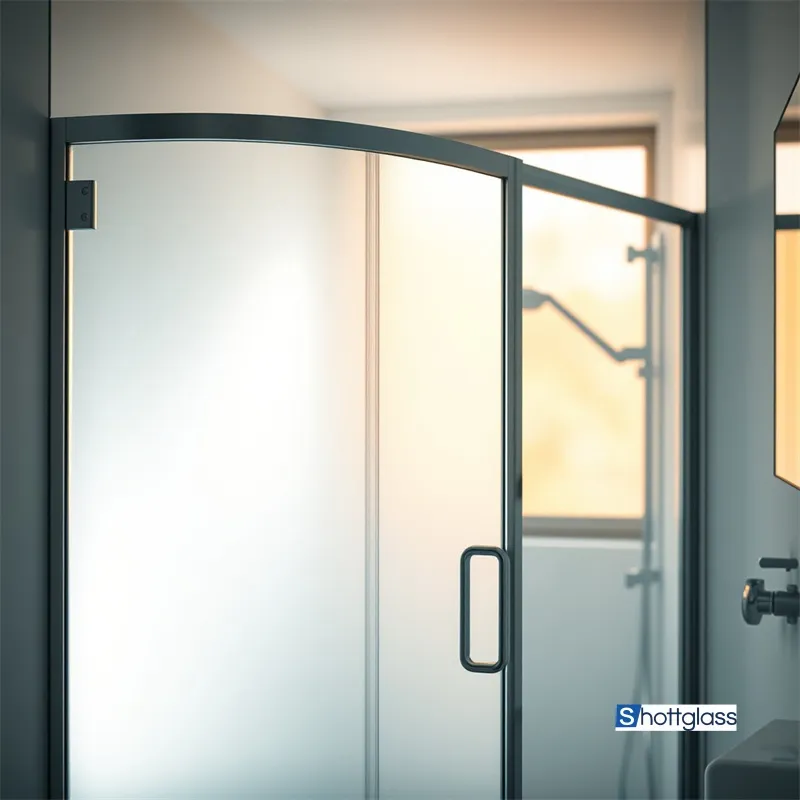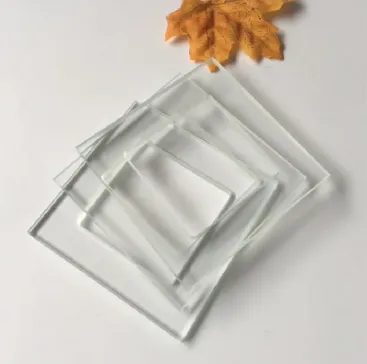Giu . 04, 2025 15:23 Back to list
Affordable Tempered Glass Sheets Durable & Shatterproof Safety Glass
- Unrivaled Technical Advantages of Tempered Glass Sheets
- Leading Manufacturer Comparison: Performance Metrics
- Bespoke Customization: Precision Engineering Options
- Industry-Specific Application Success Stories
- Transparent Pricing Structures Explained
- Installation and Maintenance Best Practices
- Future Applications: Emerging Use Cases

(tempered glass sheet)
Understanding Tempered Glass Sheet Safety and Performance
Modern tempered glass sheet
s undergo meticulous thermal tempering where standard glass gets heated to approximately 620°C (1148°F) before rapid cooling. This controlled process creates surface compression of 10,000-20,000 psi while maintaining optical clarity between 92-98% light transmission. Unlike annealed glass that fractures into dangerous shards, tempered glass breaks into harmless pebble-sized fragments - a critical safety feature making it 4-5 times stronger than standard glass.
Industry testing confirms tempered glass withstands:
- Impact resistance: Survives 100-150 joule impacts (equivalent to 2kg steel ball from 1.5m height)
- Thermal stability: Withstands sudden 200°C temperature differentials without cracking
- Surface hardness: Ranges between 6-7 Mohs scale, resisting everyday scratches
The advanced manufacturing process also provides exceptional load-bearing capacity - a typical 10mm tempered glass sheet supports up to 97.6kPa pressure compared to 63.7kPa for laminated alternatives. These fundamental properties create indispensable building materials across multiple sectors.
Leading Manufacturer Comparison
Three primary manufacturing methods dominate the tempered glass sheet market, each with distinct advantages:
| Manufacturer Type | Maximum Dimensions | Thickness Options | Color Variants | Special Features | Price per sq.ft ($) |
|---|---|---|---|---|---|
| Chemical Tempering | 3' x 6' | 0.5-3mm | Clear only | Ultra-thin applications | 15.75-24.50 |
| Vertical Oven | 8' x 12' | 3-19mm | Clear/Tinted | Minimal optical distortion | 9.25-16.80 |
| Horizontal Oven | 10' x 20' | 3-25mm | Clear/Tinted/Textured | Custom shapes & cutouts | 7.60-13.90 |
Leading suppliers like Guardian Glass and AGC offer specialized surface treatments including acid-etching and nanotechnology coatings that maintain 97%+ transparency while reducing cleaning frequency by 70%. Third-party certification standards EN 12150 (EU) and ANSI Z97.1 (US) provide measurable quality benchmarks across all manufacturers.
Customization Capabilities
Advanced fabrication facilities enable precision customization of tempered glass sheets beyond standard dimensions. Through computer-controlled waterjet cutting (accuracy ±0.1mm), manufacturers create complex geometric shapes accommodating architectural non-linear designs. Edge finishing options range from simple seamed edges to 45° beveled edges ranging 3-20mm in width.
Specialized treatments include:
- Silk-screen patterns (over 200 standard designs)
- Digital ceramic printing (resolves up to 1200 dpi)
- Anti-microbial nano-coatings (inhibits 99.6% bacterial growth)
- Photovoltaic film integration (8-12% solar energy conversion)
The customization process involves thorough DFM analysis where engineers assess load requirements, environmental factors, and installation parameters. Turnaround averages 14 business days for specialized orders, while standardized configurations ship within 72 hours from regional distribution centers.
Industry Application Studies
Tempered glass sheets have revolutionized building envelopes and product design across multiple sectors. A 2024 report documented exceptional outcomes in diverse applications:
Transportation: High-speed trains utilize triple-pane tempered units measuring 39mm thick that withstand 500km/h wind loads while reducing cabin noise by 52dB. These specialized windows maintain structural integrity at altitude extremes from -70°C to +50°C.
Retail Environments: Luxury boutiques report 37% reduction in merchandise damage after installing 15mm tempered display cases capable of resisting 270N impacts - significantly outperforming acrylic alternatives that scratch at 3H pencil hardness.
Medical Facilities: Hospitals using antimicrobial-treated glass sheets documented 42% reduction in surface pathogens compared to stainless steel control surfaces. Radiation-shielded variants containing 33% lead oxide provide protection equivalent to 1.5mm lead at just 12mm thickness.
Cost Analysis Structures
Tempered glass sheet prices vary based on six primary factors:
- Quantity: Orders exceeding 2,000 sq.ft qualify for bulk discounts (15-22% reduction)
- Thickness: Price increases logarithmically beyond 12mm thickness (+8-12% per mm)
- Cutting Complexity: Waterjet cutting incurs $5-18 per linear foot based on contour complexity
Quality variances are easily identifiable: substandard tempered glass shows noticeable optical distortion beyond 1.27mm per 300mm. Reputable suppliers provide material certification and offer performance guarantees covering spontaneous breakage (1-5 year coverage). Shipping heavy glass sheets requires specialized crating adding $0.85-3.25 per sq.ft - most economical via consolidated freight for palletized shipments.
Installation Best Practices
Proper handling of tempered glass sheets requires clamp lifting systems distributing at least 0.5kN per 150kg pane. All mounting surfaces must have undulations under 1.5mm/2m span to avoid point loading - glass tolerance for mounting pressure is just 0.08mm without proper gasket distribution.
Essential maintenance requires:
- Microfiber cleaning only to prevent surface abrasion (600-grit equivalent)
- Alkaline-free cleaners maintaining pH 6-8
- Quarterly structural gasket inspection
Failure analysis indicates approximately 72% of breakage results from edge impacts during installation - underscoring the critical need for professional mounting. When replacement becomes necessary, innovative recycling systems pulverize used sheets into 0.8-1.6mm granules for concrete reinforcement and filtration systems.
Advancing Applications for Tempered Glass Sheets
Emerging technologies continuously expand tempered glass applications. Flexible OLED integration now allows 86° bend radius without compromising luminosity in displays, while self-healing polymer interlayers automatically repair minor scratches at 24°C ambient temperature.
Research laboratories are developing electrochromic variants capable of transitioning from 68% to 3% transparency in under 1.7 seconds, and photovoltaic-integrated structural glass achieving 185W/m² energy conversion. The tempered glass sheet sector anticipates 8.7% CAGR through 2028 as architectural and manufacturing innovations continue creating unprecedented performance benchmarks in material science.

(tempered glass sheet)
FAQS on tempered glass sheet
Q: What is a tempered glass sheet?
A: A tempered glass sheet is a safety glass processed through thermal or chemical treatments to increase strength. It becomes 4-5x more impact-resistant than regular glass. If broken, it shatters into small granular chunks instead of sharp shards.
Q: How does tempered glass sheet price vary?
A: Tempered glass sheet prices depend on thickness, size, edgework complexity, and quantity ordered. Customization like holes or notches increases costs. High-volume orders typically lower the per-unit price through bulk discounts.
Q: Why choose tempered glass over regular glass?
A: Tempered glass offers superior safety, thermal resistance, and durability compared to regular glass. Its fracture pattern minimizes injury risks, while its resilience suits high-stress applications. Mandatory building codes often require tempered glass in critical areas.
Q: Where are tempered glass sheets commonly used?
A: Tempered glass sheets are widely used in architectural windows, shower enclosures, table tops, and oven doors. They also serve as protective screens for electronics and safety barriers in commercial buildings. Any high-traffic area needing breakage protection uses them.
Q: How does tempered glass enhance safety?
A: Tempered glass strengthens material integrity through compression stress, resisting impacts and thermal shock. When broken, it fragments into small, less-hazardous pieces instead of dangerous shards. This makes it mandatory for automotive windows and glass doors.
-
What Is Float Glass- All You Need to Know
NewsJun.04,2025
-
How Is Tempered Glass Made?
NewsJun.04,2025
-
What is Tempered Glass and What It's Used For?
NewsJun.04,2025
-
Different Types of Tempered Glass: Choosing the Right Solution for Your Application
NewsJun.04,2025
-
What is the Difference Between Float Glass and Normal Glass?
NewsMay.30,2025
-
Differences Between Float Glass, Tempered Glass and Laminated Glass
NewsMay.29,2025
Related PRODUCTS














